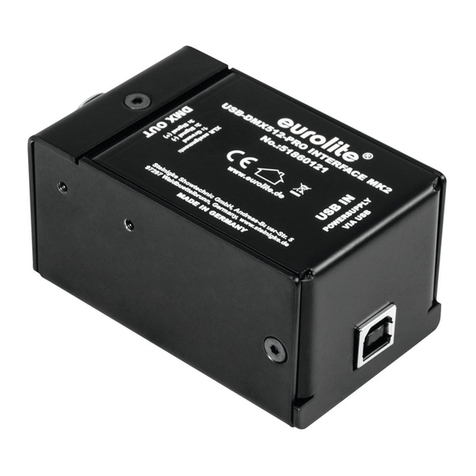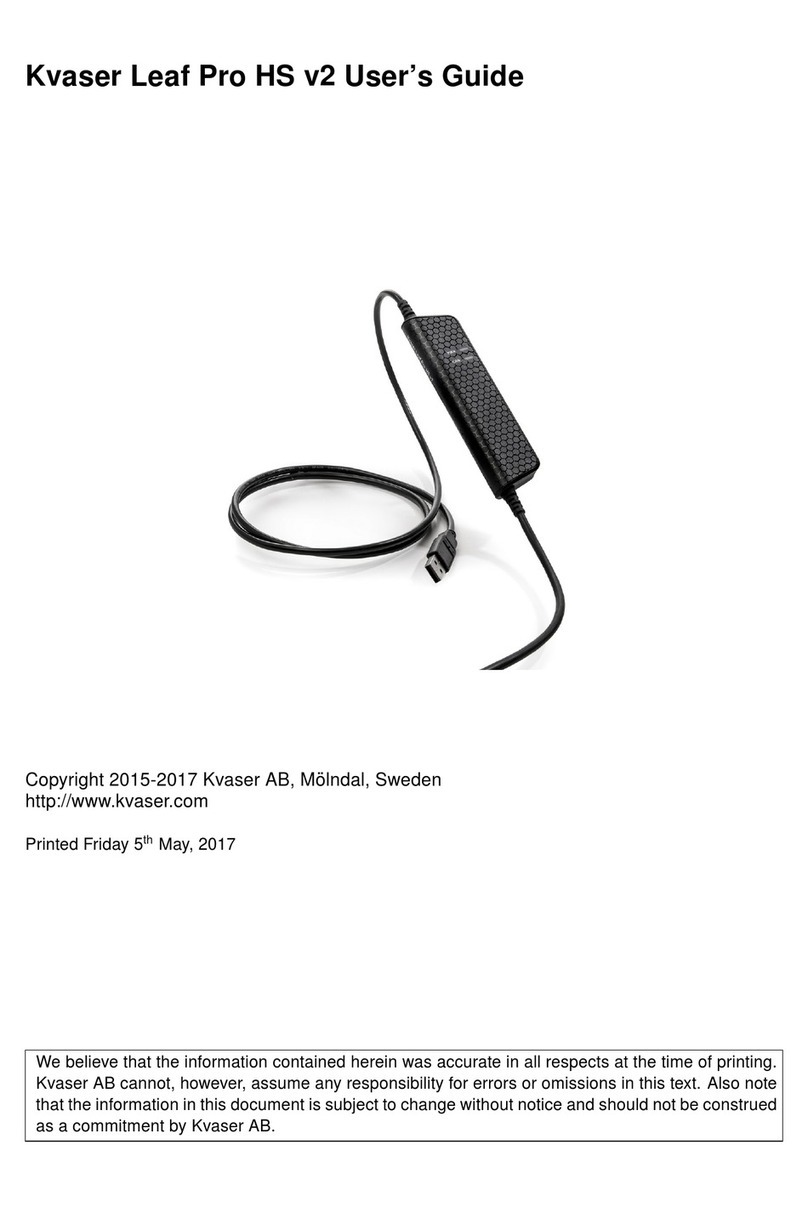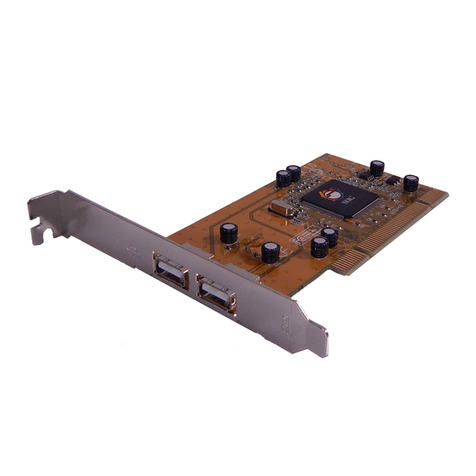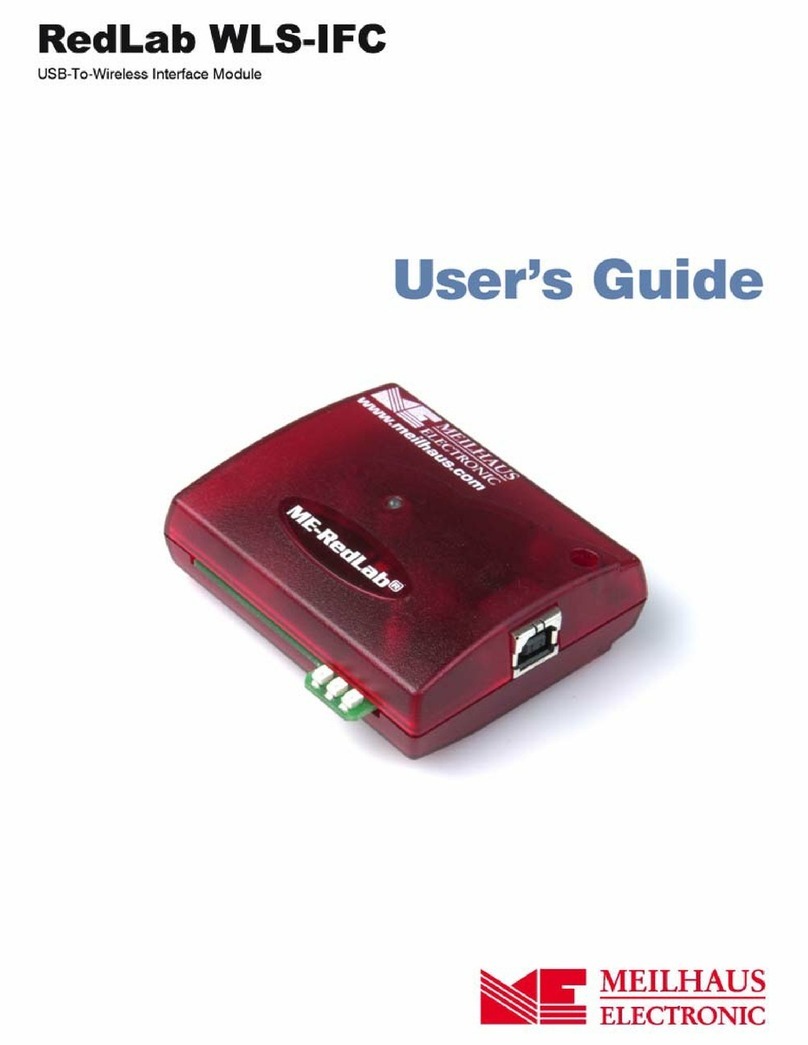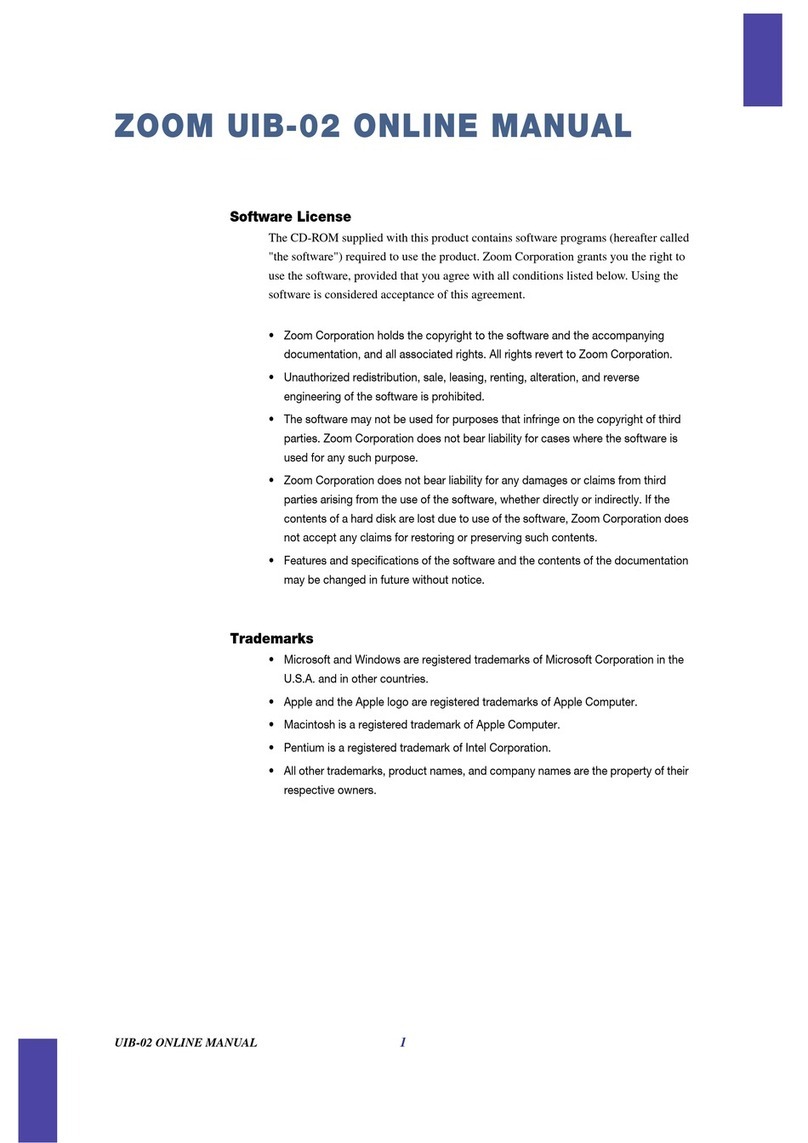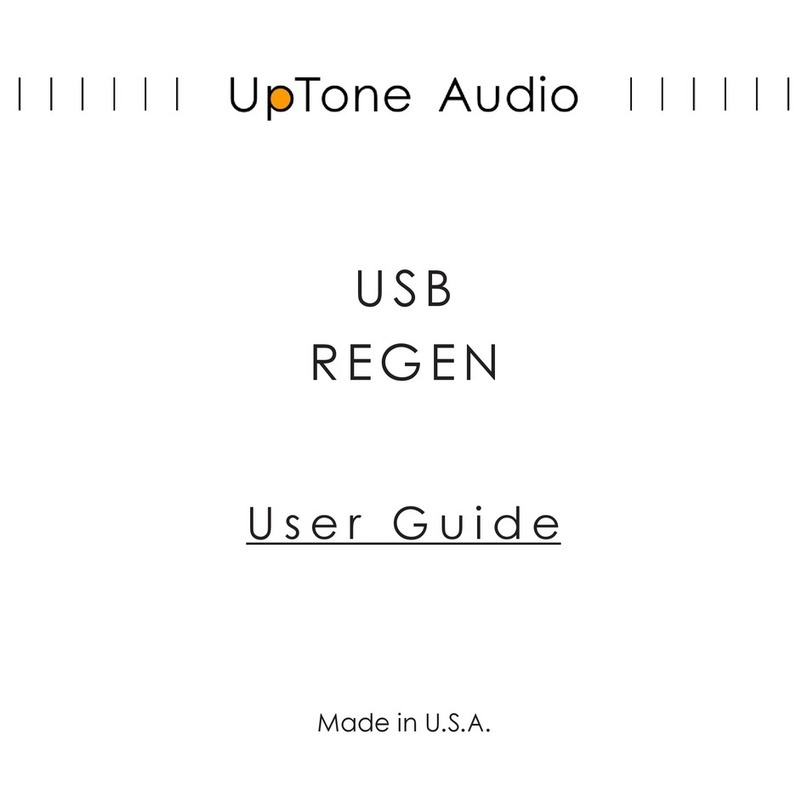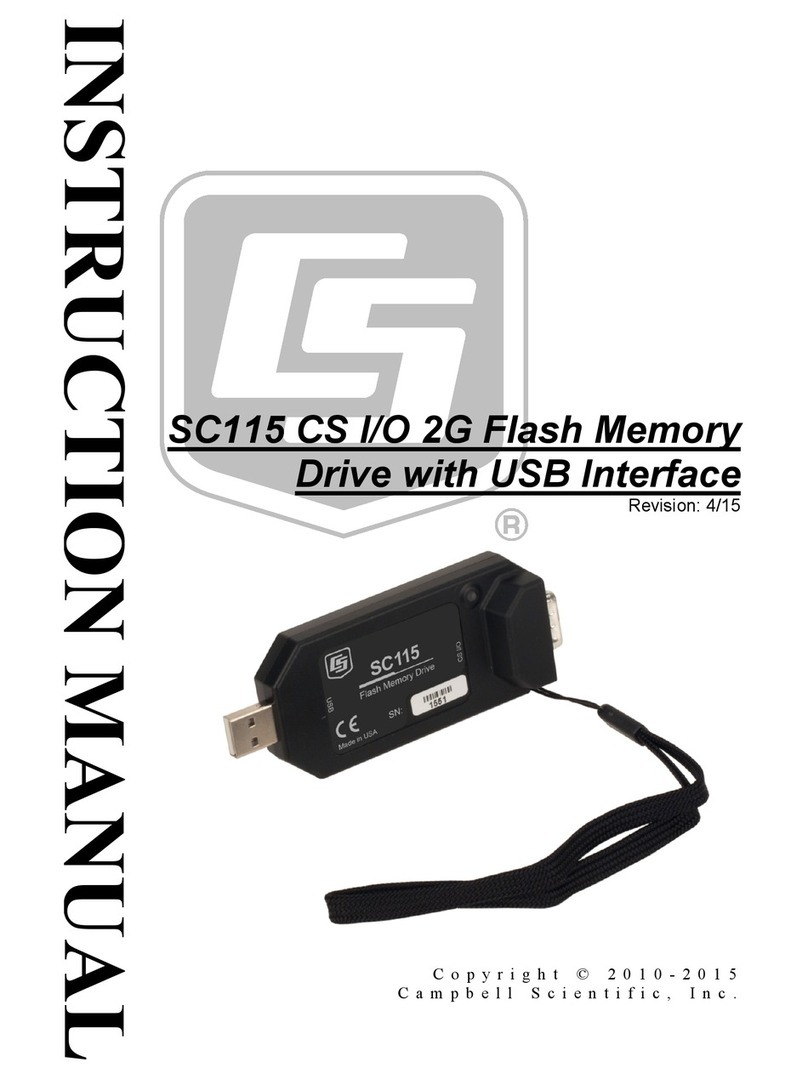Interface SI-USB4 Instruction Manual

Installation User Manual
SI-USB4
SI-USB4 Installation & User Manual

Table of Contents
11 Important Notes
1.1 General Information 1
1.2 Intended Use 2
1.3 General Hazards in the Event of non-compliance with the Safety Instructions 3
1.4 Residual Hazards 3
2 Safety and Warning Notices 3
2.1 Symbols 3
2.2 Health Protection and Safety 4
2.3 Conversions and Changes 4
3Preamble 4
3.1 Product Description 4
3.2 Safe and correct Use 5
4 Housing Connection 6
5.1 Front 6
5.2 Back 6
5 Pin Assignment SI-USB4 7
5.1 Low-pass Filter second Order 7
6 Application Example 8
6.1 Displacement Sensor Potentiometric (supplied by SI-USB4) 8
6.2 PT100 with Four-Wire Measuring 8
7 9
8
Debugging
Technical Data 10
119 Warranty

1 Important Notes
Before installing and commissioning the device, these operating instructions, and in particular the
corresponding safety instructions, must be read. The device may only be used as described in this
manual to prevent injury or damage.
1.1 General Information
These operating instructions are intended for technically qualified personnel who have appropriate
knowledgeinthefieldofmeasurementandcontroltechnology.Qualifiedpersonnelarepersonswho
are familiar with the installation, operation, maintenance and repair of the device and have the appro-
priate qualifications. The personnel must have knowledge of the legal and safety regulations and be
able to apply them.
The device may only be used by qualified personnel in accordance with the technical data in
connection with the safety regulations and rules set out below. During operation, the legal and safety
regulations required for the respective application must also be observed. This also applies
analogously to the use of accessories.
The exact information about all safety instructions and warnings contained in these operating
instructions as well as their correct technical implementation are prerequisites for the safe
installation, commissioning, safe operation and maintenance of Interface devices. All measures must
only be carried out by qualified personnel. All persons involved in the project planning, installation
and operation of Interface devices must be familiar with the safety concepts inautomation
technologyandbequalifiedintheabove-mentionedsense.
For reasons of clarity, these operating instructions cannot cover all details and information for all
applications or conceivable types of installation, operation and maintenance that must be taken into
account.
If further information is desired or required, or if special problems occur which are not described in
detail in these operating instructions, please contact Interface.
Interface devices may only be operated in accordance with the applications described in these
operating instructions. Built-in devices may only be operated if they are properly installed.
By connecting and commissioning the device, the purchaser accepts the General Terms and
Conditions of Sale and Delivery of Interface. Furthermore, the buyer accepts the possible
incompleteness of this operating manual and that the information contained therein may not be
complete and information is provided without guarantee. Errors, misprints and changes excepted.
Interface Inc.
Page (1)

What is Intended Use, What is not intended Use
A device from Interface is used for display, processing and control of processes. It must not be used
as the sole means of averting dangerous conditions on machines and systems. Machines and
systems must be designed in such a way that faulty states cannot lead to a dangerous situation for
the operating personnel (e. g. through independent limit value-switches or mechanical interlocks).
In particular, it must be ensured that a the malfunction or failure of the device does not lead to
damage to property or loss that could endanger people. It is also important to ensure that safety
precautions are not being circumvented for the safety of a plant. Emergency stop devices must
remain effective at all times.
Installation Instructions
Devices from Interface must be installed and connected in compliance with the relevant DIN and
VDE standards. They must be installed in such a way that unintentional operation is sufficiently
excluded.Topreventaninterruptionofthesupplyandsignallinesfromleadingtoan undefinedor
dangerous state, appropriate hardware and software safety precautions must be observed. Supply
and signal lines must be installed in such a way that they do not interfere with the function of the
Interface device (such as inductive or capacitive interferences).
Notes on Malfunctions, Maintenance and Repair
The device does not contain any parts that can be serviced by the user. Repairs may only be
carried out by Interface. If it can be assumed that safe operation of the device is no longer possible,
it must be put out of operation immediately and secured against unintentional operation. This
applies in particular if:
• The device is visibly damaged
• The device is no longer functional
• Parts of the appliance are loose
• The connecting lines are visibly damaged
In addition, we would like to point out that all obligations of Interface arise exclusively from the
respective purchase contract in which the warranty is conclusively stated.
1.2 Intended Use
Devices from Interface are to be used exclusively for measuring tasks and the directly associated
control tasks. Any use beyond this is considered to be improper. Legal and safety regulations must
be observed during measurement. The instrument is not a safety component in the sense of its
intended use and must be transported and stored properly. Installation and commissioning, as well
as operation and disassembly must be carried out professionally.
Interface Inc.
Page (2)

1.3 General Hazards in the Event of non-compliance with the Safety
Instructions
The device is in compliance with current safety requirements. Residual dangers can emanate from
the device if it is improperly used and operated by untrained personnel. Any person entrusted with
the installation, operation, maintenance and repair of the device must read and understand the
operating instructions and, in particular, the safety instructions.
Incorrect use (e. g. by untrained personnel) may result in residual hazards. The operating instructions
must be read and understood by all persons involved in the installation, commissioning, maintenance,
repair, operation and dismantling of the device. The device must not be used if damage is visible.
1.4 Residual Hazards
The system planner, equipment supplier and operator must plan, implement and be responsible for
the safety of the equipment. Other hazards must be minimized. The residual dangers of
measurement technology must be pointed out and human error must be taken into account. The
design of the system must be suitable for avoiding hazards - a hazard analysis must be carried out
for the system.
2 Safety and Warning Notices
2.1 Symbols
Warning: There is a risk of injury to persons. Damage to the machine is possible. The
accident prevention regulations of the employer‘s liability insurance association must
be observed.
Note: Important points to be observed. A note that indicates a possible danger of da-
mage to the product, process, person or the environment.
Additional information or reference to other important detailed information.
Interface Inc.
Page (3)

2.2 Health Protection and Safety
To ensure that our products are safe and do not pose a health hazard, the following points must be
observed:
1. Read all relevant sections of this manual carefully before starting work.
2. All warning signs on containers and packaging must be observed.
3. Installation, operation, maintenance and repair work may only be carried out by suitably trai-
ned personnel and in accordance with the instructions given. If one of these instructions is
not followed, the user of the product bears full responsibility for any consequences that may
occur.
4. Disconnect the appliance from any power supply before opening it.
5. The safety instructions must be strictly observed in order to avoid damage to property and
bodily injury - possibly even fatal ones.
2.3 Conversions and Changes
Thedevicemaynotbemodifiedintermsofdesignorsafetywithouttheexpressconsentof
Interface.Anymodificationexcludesanyliabilityonourpartfordamagesresultingtherefrom.
Repairsandmodificationsareprohibited.
3 Preamble
3.1 Product Description
The SI-USB4 is a measuring amplifier with up to four independent input channels. Each input
channel is displayed as a separate device on a PC (virtual serial interface). Each measuring
channel can be individually set in the factory for a physical quantity or a sensor.
The following sensor signals are currently available:
±4.5 mV/V
±5V
±10V
0 ... 20 mA
4 ... 20 mA
10 ±10 mA
Strain gauge signals:
Active signals with voltage input:
Active signals with voltage input:
Active signals with current input:
Active signals with current input:
Active signals with current input:
Active signals with current input:
Linear potentiometer:
Temperature measurement:
Quadratureencoder:
12 ±8 mA
0 ... 5V
- 200 ... 860 °
5VTTL
(corresponds ±30000 digits)
(corresponds ±25000 digits)
(corresponds ±25000 digits)
(corresponds 0 ... 20000 digits)
(corresponds 0 ... 20000 digits)
(corresponds 0 ... 20000 digits)
(corresponds 0 ... 20000 digits)
(corresponds 0 ... 25000 digits)
(corresponds - 6400 ... 27520 digits)
(corresponds±32511digits)
Theampliervariantisindicatedonthetypelabelandinthedocumentation.
Interface Inc.
Page (4)

Warning: Please pay attention to the signal type of the sensor when connecting the sensor.
Connectingthesensorwiththewrongsignaltypecandamagetheamplierandthesensor.
The Interface USB drivers are required for the operation on a PC. They are available for download
on our website.
For operation of the SI-USB4we recommend the software VS3. It is available for download on our
website.
Among others, this software provides following functions:
•CongurationpossibilitiesfortheVS3
• Storage of sensor-related scaling and adjustment data
• Display for the presentation of measured data
(actual value, tare value, minimum value and maximum value)
• Presentation of the measured data in a diagram
•StorageofmeasureddatainCSV-format(outputcongurable)
• Storage of the diagram in BMP-format (output size adjustable)
•Print-outofthediagramwithdateanddenablesuperscription
• Presentation of the sensor information
3.2 Safe and correct Use
Warning: Observe the correct sensor adjustment.
ConsiderthecorrectVS3conguration.
Chooseasignicantleidentication/prexwhenstoringmeasureddata.
Fasten housing, ground, connect power supply, protect from splash water and do not pull
the cable.
Interface Inc.
Page (5)

4 Housing Connection
4.1 Front
The four sensors are labeled Sensor 1 - 4. First the power supply must be connected. When a
sensor is connected, the corresponding power LED is activated. The Link-LED is only activated
when a PC/Laptop connection via the USB socket on the back exists. If the Link-LED is dark, check
the SI-USB4 connection to the PC/Laptop. Temperature measurements are possible at sensor con-
nection 1 and/or sensor connection 4.
4.2 Back
Inadditiontotheserialnumberinthersteld,thesensorsandtheirassociatedconnectionsare
listedhereinthesecondeld.
It is important to ensure that there is no interchanging of the sensors, e. g. if a measuring
chain exists.
The power is supplied either via the black power supply socket with a separately delivered power sup-
ply unit or via the green socket. Again, the polarity is independent for both power supply sockets. The
middle PIN is the shield for the green socket.
Or
+-- +
Interface Inc.
Page (6)

5 Pin Assignment SI-USB4
Signal (-) (when active connect to ground)
5.1 Low-pass Filter second Order
Thesettingsforthecut-offfrequenciesofthelow-passfiltercanbefoundinthe VS3 software
manual.
15-pin ±4.5mV/V, ±5V, ±10V, 0-20mA, 4-20mA, 10±10mA, 12±8mA, 0-5V, PT100, 5VTTL
Pin 1 Ground (supply 4V and 12V) 0V; 1-Wire GND
Top view
Pin 2 +12V (active supply) 12VDC
Pin 3 NC -
Pin 4 Signal angle A 5V TTL
Pin 5 Signal angle B 5V TTL
Pin 6 Ground 0V
Pin 7 NC -
Pin 8 Supply 4VDC
Pin 9 NC -
Pin 10 Control signal or
TEDS
L <2.0V; H >3.5V or
1-Wire DATA
Pin 11 Signal (+) (active or passive) mV/V; ±5V; ±10V; 0/4 ... 20 mA
Pin 12 0V
Pin 13 Ground 0V
Pin 14 NC -
Pin 15 +5V Reference voltage 5VDC
Interface Inc.
Page (7)

6 Application Example
6.1 Displacement Sensor Potentiometric (supplied by SI-USB4)
Output 0 ... 25000 Digits
6.2 PT100 Industrial Temperature Sensor with Four-Wire Measuring
Connect the Signal (+) and Signal (-) wires as close as possible to the PT100.
30
1 m
R 5000
ILoad ~170 mA
5V Reference
Signal+ 11
1
15 ILoad
0V (Ground -)
Front View
Front View
Interface Inc.
Page (8)

7 Debugging
Thischarthelpstofindfrequenterrorsandmethodsfordebugging.
Error Possible Cause Debugging
A connection to the SI-USB4
is not possible
Driver incorrectly or not
installed
• Install driver package
•Thefirststart-upoftheSI-USB4
must be carried out with adminis-
trator rights
Supply voltage is overloaded • Check whether the connected
sensor corresponds to the speci-
fications of the SI-USB4. If the
sensor requires higher current
than available for the SI-USB4,
this sensor cannot be used to-
gether with the SI-USB4
Power supply not connected • Connect power supply
Supply voltage is shortened • Fix the short circuit
Output signal is at the upper
or lower modulation limit
Active sensor is connected
to the strain gauge input
•Check on type label for which in-
puttypehasbeenconguredfor
the applied sensor connection
Supply voltage connected to
sensor input
•Check/correct the pin assign-
ment
Outputsignaluctuates
(strain gauge)
Open sensor input • Connect sensor
Cut-off frequency adjust-
ment not correctly set
• Set the right cut-off frequency
Interface Inc.
Page (9)

8 Technical Data
USB-Sensor-Interface SI-USB4
Input range ±4.5 mV/V ±5V ±10V 0 - 20
mA
4 - 20
mA
10 ±10
mA
12 ±8 mA 0 - 5V --200 ..
860 °C 5V TTL
Evaluation Side
Zero point 0 digits
Output format 16 Bit Signed Int.
Input resistance >1MΩ(onlyfor±4.5mV/V / ±5V / ±10V / 0-5V)
Rated burden 62Ω(onlyfor0-20mA / 4-20mA / 10±10mA / 12±8mA)
Low-passlter2nd
order 30/300/1000/3000 Hz
Measuring rate max. 5000 meas./s
Temperature drift 4 Bit/10 K
Linearity error ±32 digits
Accuracy ±32 digits
Supply voltage of
mains adapter 100 - 240VAC
Output of mains
adapter 24VDC, 1.25 A
Supply voltage
SI-USB410- 30VDC≤880mA
Sensor Side
Sensor supply 4V≤20
mA 12V≤80mA 5V
≤170mA
4V≤20
mA
5V≤85
mA
Cable length SI-
USB4- sensor Variable
Miscellaneous
Electrical
connection
Strain gages ±4.5mV/V / ±5V / ±10V / 0-20mA / 4-20mA / 10±10mA / 12±8mA / 0-5V / PT100 / 5V TTL:
D-SUB-Socket, 15-pin USB: USB-B-Socket
Cable length
SI-USB4- PC 3 m
Rated temperature
range 10 - 40 °C
Operating tempera-
ture range 0 - 50 °C
Storage tempera-
ture range -10 - 70 °C
Dimension (LxWxH)
SI-USB4130 x 190 x 60 mm
Level of
protection IP20
Material SI-USB4Aluminum
Weight SI-USB41.2 kg
Interface Inc.
Page (10)

Warranty
All instruments from Interface Inc., ('Interface') are warranted against defective material and
workmanship for aperiod of (1) one year from the date of dispatch. If the
'Interface' product you purchase appears to have adefect in material or workmanship or fails
during normal use within the period, please contact your Distributor, who will assist you in
resolving the problem. If it is necessary to return the product to 'Interface'
please include anote stating name, company, address, phone number and a detailed
description of the problem. Also, please indicate if it is a warranty repair. The sender is
responsible for shipping charges, freight insurance and proper packaging to prevent breakage
in transit. 'Interface' warranty does not apply to defects resulting from action of the buyer
such as mishandling, improper interfacing, operation outside of design limits, improper
repair or unauthorised modification. No other warranties are expressed or implied.
'Interface' specifically disclaims any implied warranties of merchantability or fitness for
aspecific purpose. The remedies outlined above are the buyer's only remedies.
'Interface' will not be liable for direct, indirect, special, incidental or consequential damages
whether based on the contract, tort or other legal theory.
Any corrective maintenance required after the warranty period should be performed by
'Interface' approved personnel only
www.interfaceforce.com
9 Warranty
Interface Inc.
Page (11)
Table of contents
